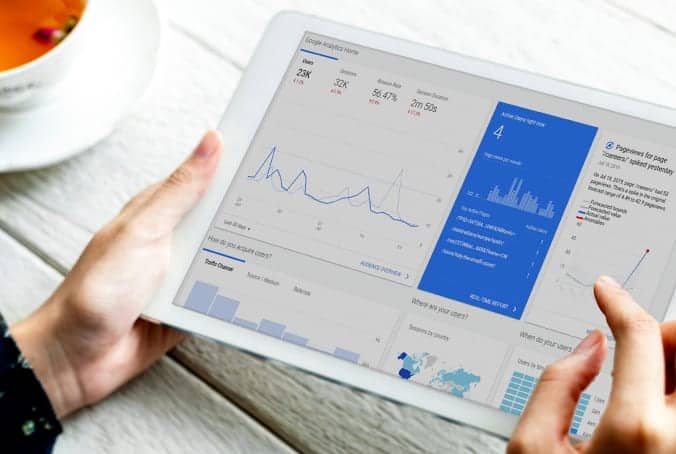 When social advertising first came on the scene, primarily with early Facebook efforts, many agencies turned to their search team to test this new capability. It made sense that the search team could get a good handle on paid social: Initially, Facebook used specific targeting not unlike keywords in search or the Google Display Network, and a lot of management platforms came out with Facebook integrations. Now, as paid social has become more complex and specific, in many cases it is managed by a completely separate team of experts that encompass programs for Instagram, Twitter, Snapchat and more. While paid social and paid search can have different objectives (e.g., social = awareness, search = conversion, although this is not always the case), it is important to understand their significant impact on each other, and how search and social together are integral to a successful marketing program.
When social advertising first came on the scene, primarily with early Facebook efforts, many agencies turned to their search team to test this new capability. It made sense that the search team could get a good handle on paid social: Initially, Facebook used specific targeting not unlike keywords in search or the Google Display Network, and a lot of management platforms came out with Facebook integrations. Now, as paid social has become more complex and specific, in many cases it is managed by a completely separate team of experts that encompass programs for Instagram, Twitter, Snapchat and more. While paid social and paid search can have different objectives (e.g., social = awareness, search = conversion, although this is not always the case), it is important to understand their significant impact on each other, and how search and social together are integral to a successful marketing program.
At BCM, we have been especially attuned to how our paid social and paid search teams can collaborate to inform targeting strategies and creative, in addition to how a user’s exposure to a paid social or paid search ad can affect her behavior. Here are our tips for integrating paid social and paid search to optimize your results and add another dimension to targeting and creative execution.
Integrating Programs
Facebook recently released a study showing that social can inform how and when people search, especially on mobile. The study found that when a user was shown a Facebook ad, there was a subsequent increase in branded searches. This can help to inform a search strategy that is prepared for these shifts in traffic. We have done our own research into these results and have found that our traffic on branded terms can increase up to 50% in some cases after a big paid social push. In addition, this information is important given the rising doubt in the need to bid on your own brand terms. With the rise in trademark infringement and SERP (search engine results page) changes, it’s essential to a user’s cross-channel purchase completion that they be able to easily access information about your brand through a search.
In addition to a rise in branded searches, our own data shows some increases on unbranded searches after a social push. Because of this, aligning search budgeting strategies with social flighting can help ensure that your brand is visible at the time the user is searching.
Researching Facebook Comments
Facebook comments are an insight into how a user is referring to your product, and can be valuable for the search team to monitor. The social team is typically monitoring the Facebook comments for negative feedback and questions, but the search team can monitor the comments to see the language that customers use to refer to the product or category. We have found success in discovering a shorthand or abbreviations from users. After adding these keywords into the search program, we have found them to be some of our best performing groups, with over 200% higher CTR than average.
Monitoring the comments section of each post gives the advertiser insight into exactly how and what users think of the product, and can help inform a new keyword or copy strategy. They can also help the search team understand the negative sentiments that can help inform negative keywords. While search query reports through Google and Bing can provide this insight as well, match-type restrictions such as “phrase” and “exact” won’t give insight into broad phrasing and your program could be missing out.
Integrating Teams & Sharing Creative Insights
If you’re doing it right, you should frequently be testing copy in search and social to figure out the messaging that resonates best for the user on each channel. To add another layer to that, social and search teams should work together to test copy that is performing best on each channel, and share their insights.
In addition to search and social advertising working together through a customer’s journey, the search and social teams can work together to improve both campaigns overall. We’ve found performance success by encouraging the two teams to work side by side to share results and learnings.
Facebook Insights for Search Targeting
Facebook’s Page Insights gives information on the demographics from users who have engaged with your ad, the people you’ve reached through your ad, and your fans. While this has proven to be helpful in crafting a creative strategy for paid social, it can also be helpful in paid search.
Through Google Search, Demographics for Search Ads has given advertisers the ability to reach or prioritize specific demographics such as age and gender. You may discover through Facebook insights that only 30% of fans for your product are male, and can use this information to ensure you’re reaching a larger share on search. Because of this finding, it may be helpful to increase your bid adjustment for males in your search program to ensure that you’re showing up more often. It is possible to find this information elsewhere, but Facebook has a large sample of users who are most interested in your product. It’s also easy to access and doesn’t cost any extra budget to discover.
It’s clear that paid search and paid social data can hold keys to each other’s success. In this new cross-channel world, coordinating strategies between the two programs is crucial to ensuring that your ad is visible at the right time, to the right audience.
New Year’s Resolutions for Paid Search Marketing
From Google’s SERP changes to new offerings from Bing and Yahoo, 2014 has been a huge year for changes in paid search marketing, and the trend will...


